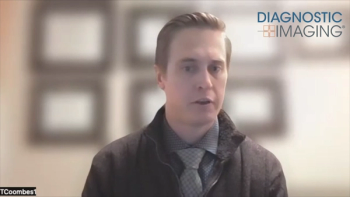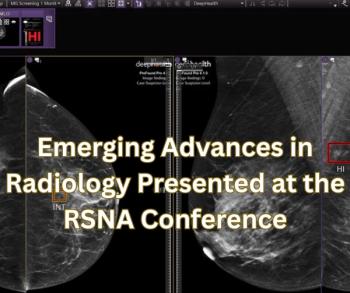
Multidisciplinary Group Publishes Recommendations for Magnetic Resonance Defecography
The report provides a universal set of recommendations and language for technique, interpretation and reporting of magnetic resonance defecography and is endorsed by six medical societies.
The Pelvic Floor Disorders Consortium (PFDC) has published consensus definitions and interpretation templates for
The report was published simultaneously in four specialty journals:
“The report provides a framework for pelvic floor experts in multiple disciplines to understand how a patient needs to prepare for a pelvic floor MRI and what to expect,” lead author Brooke Gurland, MD, colorectal surgeon and clinical professor of surgery at Stanford Pelvic Health Center told Diagnostic Imaging. “The report provides explanation as to what is being measured and why and the level of agreement between specialists.”
It is endorsed by the American Society of Colon and Rectal Surgeons, Society of Abdominal Radiology, International Continence Society, American Urogynecologic Society, International Urogynecological Association, and Society of Gynecologic Surgeons.
The PFDC Working Group on Magnetic Resonance Imaging of Pelvic Floor Disorders included 24 experts from around the world representing a wide range of relevant clinical specialties, including colorectal surgeons, urogynecologists, urologists, gynecologists, gastroenterologists, radiologists and physiotherapists. It was established to support collaboration among the specialties, evaluate educational programs, create clinical guidelines and algorithms, and promote high quality care.
The specialists involved in the creation of the report bring unique perspectives and approaches to their work diagnosing and managing patients with pelvic floor conditions. They participated in preliminary working group phone calls and worked in pairs including a radiologist and a clinical specialist researching published literature on assigned relevant topics and points of controversy. Their collective preliminary report was presented at the Pelvic Floor Consortium Expert Meeting on June 2, 2019, in Cleveland, Ohio. Participants voted to establish consensus and additional research was conducted to address questions before proposed recommendations were advanced for review, editing and final approval.
“The committee members who participated were all volunteers working after hours in addition to regular jobs,” Gurland said. “Volunteers were in different time zones and countries. Finding time for committee meetings and then working on the manuscripts requires hours of extra work. I am always amazed for the dedication of my colleagues to improve patient care.”
Their efforts created a universal set of recommendations and language for technique, interpretation and reporting of magnetic resonance defecography (MRD), which uses magnetic resonance imaging during defecation to evaluate rectal function. MRD provides detailed information to understand the cause of incontinence, constipation and pelvic organ prolapse. It includes multicompartment visualization with high contrast resolution allowing for the evaluation of three pelvic floor compartments during defecation.
The working group brought multidisciplinary input to efforts to standardize MRD technique, which has been limited by differences in nomenclature and reporting across subspecialties along with different definitions of conditions and thresholds for grading severity, which have hindered effective communication among clinicians.
The templates and techniques provided by the report serve as the minimum requirements for MRD, and clinicians can add specific patient indications, provider preferences and local practice patterns to their assessments.
“This provides them with a framework for MRI reporting so we have a common language and expectations as to the baseline information to include in the report,” Gurland said.
The report covers general considerations such as patient positioning, contrast medium considerations, and technique and reporting/grading of relevant pathology and includes the degree of consensus for each recommendation. The report stresses the importance of patient education to ensure cooperation. It includes images and detailed descriptions and recommendations for identifying and grading abnormalities such as dyssynergia, rectocele, intussusception, and rectal prolapse.
“Next steps include validating posterior compartment findings with clinical findings for improving diagnostic accuracy,” Gurland said.
Newsletter
Stay at the forefront of radiology with the Diagnostic Imaging newsletter, delivering the latest news, clinical insights, and imaging advancements for today’s radiologists.




























